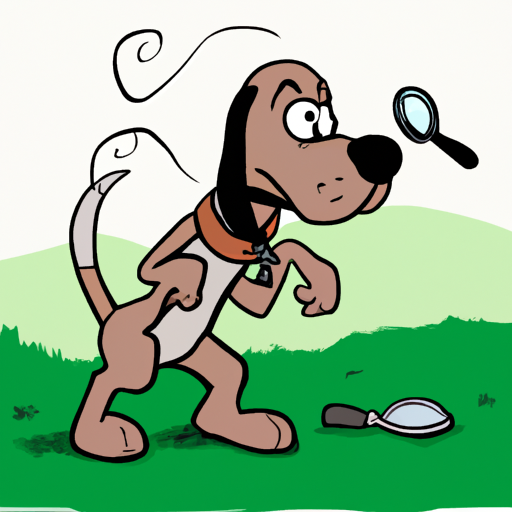Welcome to this comprehensive guide on how your furry friend perceives the world around them through their sense of smell. As a caregiver, understanding how your dog smells can give you a better insight into their behavior, needs, and reactions to the environment.
What Makes a Dog’s Sense of Smell So Powerful?
Contrary to humans, dogs primarily experience their world through their noses. Their olfactory capacity is immensely more powerful than ours, allowing them to detect scents we can’t even begin to perceive.
- Nose Anatomy: Dogs have an impressive 220 million olfactory receptors in their noses, compared to a mere 5 million in humans. This significantly higher number of receptors greatly amplifies their sense of smell.
- Brain Power: About a third of a dog’s brain is dedicated to the sense of smell, compared to only 5% in humans.
- Specialized Organ: Dogs have a specialized organ, the vomeronasal organ, or Jacobson’s organ, specifically designed to process pheromones. This organ gives dogs the ability to detect things that are undetectable to the human nose.
Understanding Scent Detection in Dogs
Dogs use their powerful sense of smell for a variety of purposes, from detecting food to recognizing territory and even diagnosing diseases in humans. Their noses function quite differently from ours.
- Tracking Scents: Dogs can track scents through the air, on the ground, or on specific objects. They can differentiate between different scents and remember them for long periods.
- Smell and Taste: Dogs’ sense of smell is closely linked to their sense of taste. Through their vomeronasal organ, they can “taste” the air, gathering more information about their environment.
- Detecting Emotions: Dogs can pick up on subtle changes in the scent of their human caregivers, allowing them to detect emotions like happiness, fear, or anxiety.
The Role of Smell in Canine Communication
Smell is also an essential part of canine communication. It’s how dogs gather information about each other and the world around them.
- Marking Territory: Dogs use their urine to mark their territory. The scent left behind tells other dogs who’s been there, their sex, and other vital information.
- Recognizing Individuals: Just as humans recognize each other by sight, dogs recognize each other by smell. Every dog has a unique scent fingerprint.
- Interpreting Moods: Dogs can also smell pheromones, which are chemicals that communicate mood, fertility, and other information.
How to Support Your Dog’s Sense of Smell
As a caregiver, it’s vital to nurture your dog’s olfactory abilities and respect their reliance on their sense of smell. Here are some ways to do so:
- Provide Scent Enrichment: Use toys, puzzles, and games that engage your dog’s nose. Treat-dispensing toys or hiding treats around the house can keep their noses and brains active.
- Allow Sniff Walks: Let your dog take the lead on walks and take their time sniffing around. These “sniff walks” can be a great source of mental stimulation.
- Avoid Strong Smells: Be mindful of using strong-smelling cleaning products or perfumes around your dog.
| Do’s | Don’ts |
|---|---|
| Engage your dog’s nose in play | Forcefully pull your dog away from interesting scents |
| Allow your dog to explore new smells | Overwhelm your dog with strong artificial smells |
Frequently Asked Questions
1. Why does my dog sniff everything on walks?
Dogs sniff on walks to gather information about their environment. It’s like reading the daily news for them.
2. Can dogs smell fear or other emotions in humans?
Yes, dogs can smell the subtle changes in our body odor that occur with different emotions, including fear and anxiety.
3. How can I train my dog to use their sense of smell?
Engaging in scent games, like hide and seek with treats or toys, is a fun way to train your dog to use their nose.
Understanding how dogs smell not only allows us to appreciate the richness of their sensory world, but also helps us cater to their needs better. As a caregiver, recognizing the importance of your dog’s sense of smell can help you provide a more enriching and comfortable environment for them.



